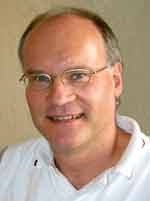

Abstract Main Theme 6
Dr. Hubert Noé
Where I have found voice science of practical value in training the singing voice
In voice teaching there are many confusing, contradicting and even dangerous clichés such as:
- Place your tone forward (with the help of more support?)
- Open your throat (or narrow it?)
- Keep your tongue down (formants!!)
- Give it more support (which in general is more pressure).
One of the main reasons for this confusion is the fact that some of the most important physiological and acoustical laws important for singing seem to be counterintuitive or against common sense. One cannot direct or project sound or place the voice forward (not even with the help of breath support). After the passage of the larynx, air is transformed into acoustic energy and aerodynamic laws are no longer applicable. Unlike the aerodynamic (Bernoulli) pressure, the acoustic pressure is higher in areas of contraction. Muscular manipulation of the position of the tongue and larynx which seem to be easy to understand come into conflict with the acoustic laws of the articulation (e.g. formants) which are more difficult to understand. The large muscles of the abdomen are not suited to do the fine adjustment of the subglottal pressure and the glottal adduction. The glottal valve has to regulate it with the help of the vocal tract. The great progress in voice science in the last decades has thankfully brought light into this area and freed us from the danger of approaching problems with still more “support,” maximum “widening” of the resonance chambers, and various projections in a range of “learned methods.”